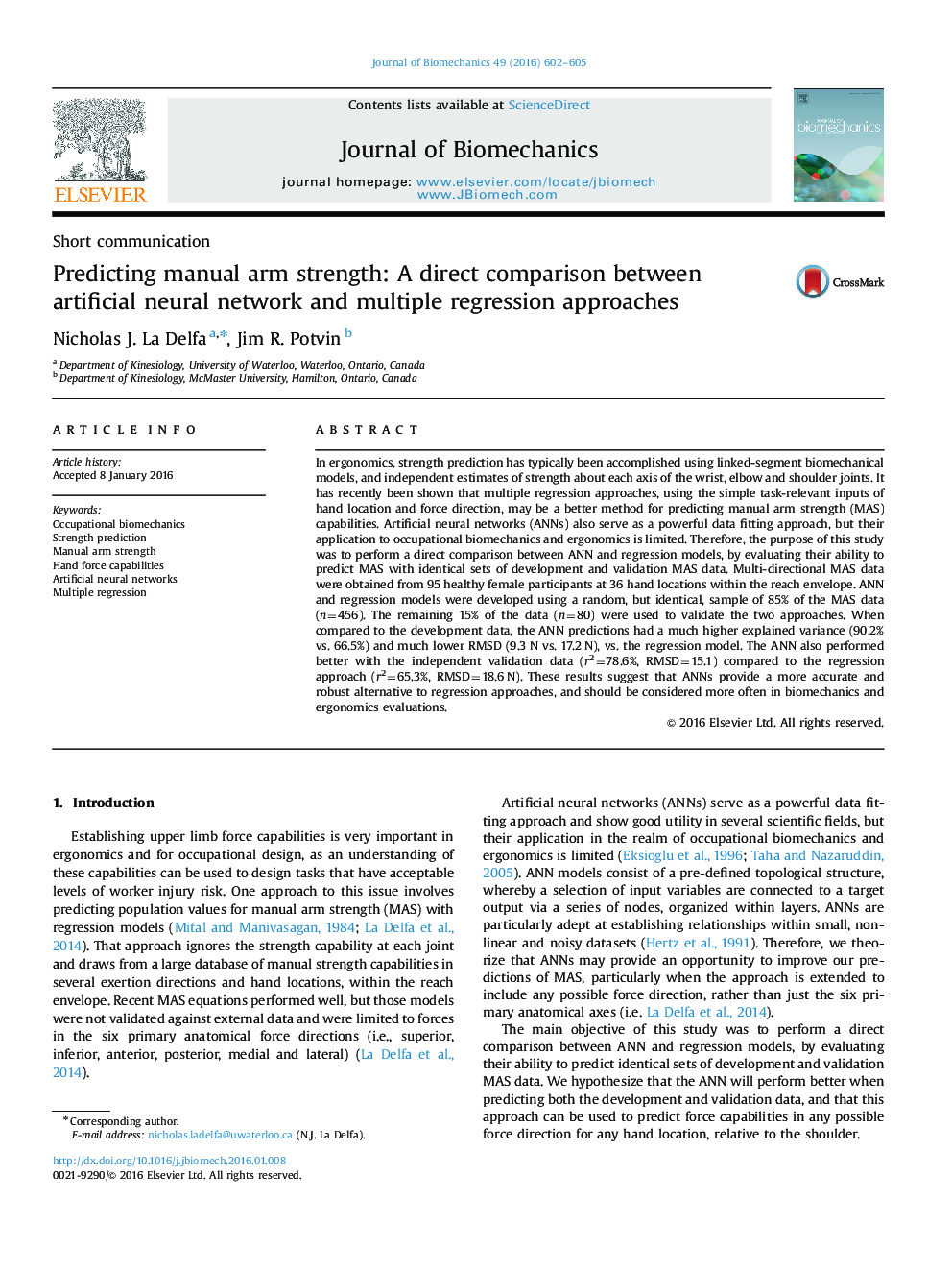| کد مقاله | کد نشریه | سال انتشار | مقاله انگلیسی | نسخه تمام متن |
|---|---|---|---|---|
| 871803 | 910201 | 2016 | 4 صفحه PDF | دانلود رایگان |
In ergonomics, strength prediction has typically been accomplished using linked-segment biomechanical models, and independent estimates of strength about each axis of the wrist, elbow and shoulder joints. It has recently been shown that multiple regression approaches, using the simple task-relevant inputs of hand location and force direction, may be a better method for predicting manual arm strength (MAS) capabilities. Artificial neural networks (ANNs) also serve as a powerful data fitting approach, but their application to occupational biomechanics and ergonomics is limited. Therefore, the purpose of this study was to perform a direct comparison between ANN and regression models, by evaluating their ability to predict MAS with identical sets of development and validation MAS data. Multi-directional MAS data were obtained from 95 healthy female participants at 36 hand locations within the reach envelope. ANN and regression models were developed using a random, but identical, sample of 85% of the MAS data (n=456). The remaining 15% of the data (n=80) were used to validate the two approaches. When compared to the development data, the ANN predictions had a much higher explained variance (90.2% vs. 66.5%) and much lower RMSD (9.3 N vs. 17.2 N), vs. the regression model. The ANN also performed better with the independent validation data (r2=78.6%, RMSD=15.1) compared to the regression approach (r2=65.3%, RMSD=18.6 N). These results suggest that ANNs provide a more accurate and robust alternative to regression approaches, and should be considered more often in biomechanics and ergonomics evaluations.
Journal: Journal of Biomechanics - Volume 49, Issue 4, 29 February 2016, Pages 602–605
